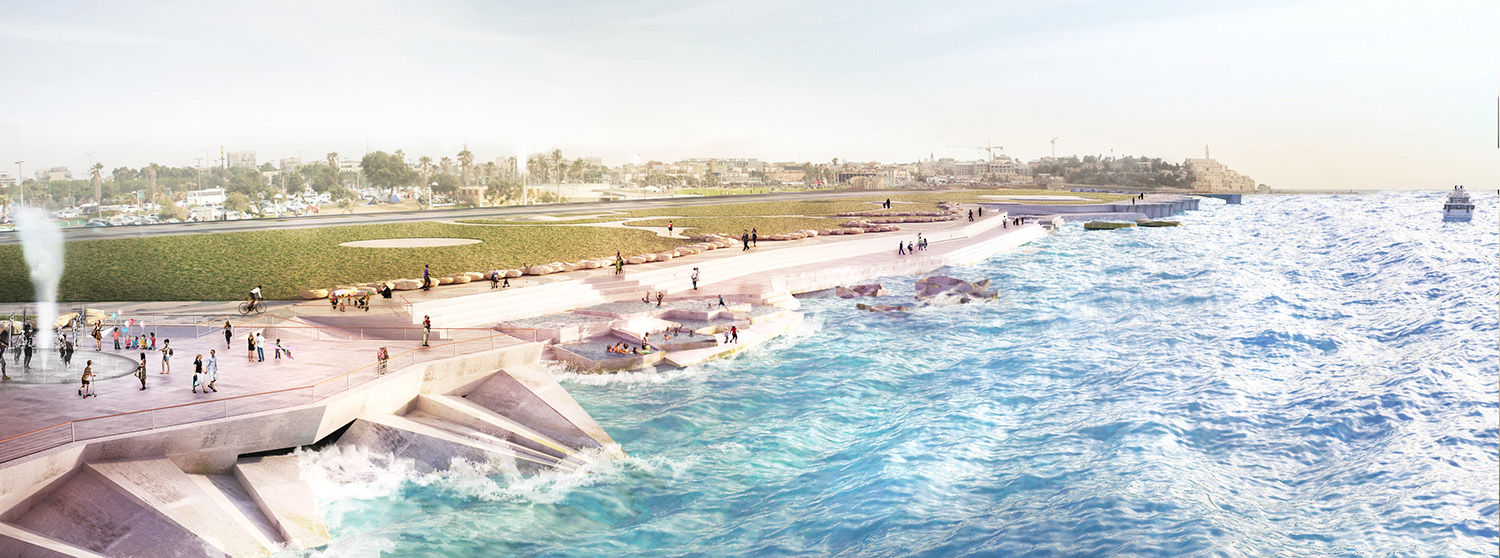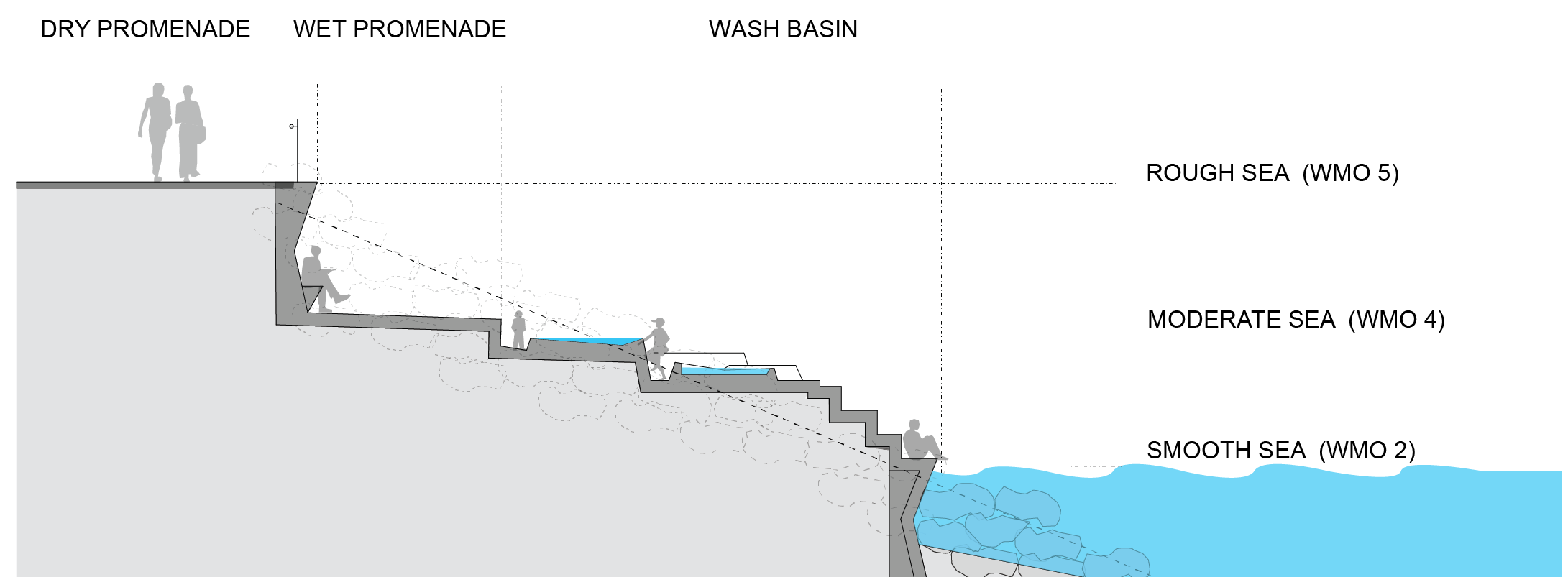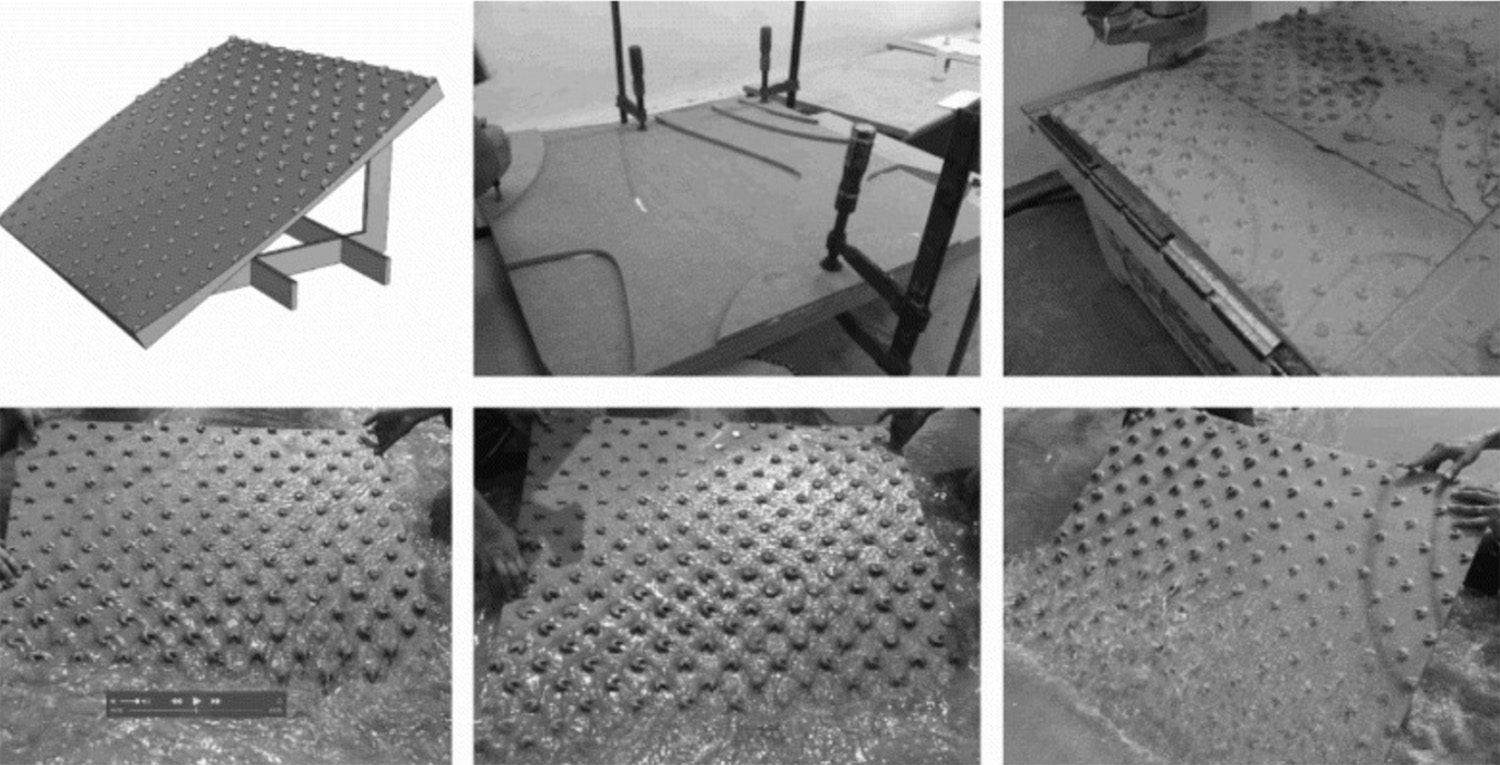
A multifunctional computational approach to waterfront design
Computational tools that simulate the unfolding interaction of solid objects with complex fluid environmental forces such as wind or water flows provide an experimental space for exploring how the ability to simulate processes in time could be mobilized to support, expand or transcend existing ways of making, using, and experiencing objects and places.
The presented research examines the efficacy of these tools to the design of coastal infrastructure. It is based on the assumption that recent technological developments in digital design and fabrication dissolve the limits in designing and fabricating complex architectural forms.

It thus facilitates a design that goes beyond the static, defensive and single functional modernist approach to waterfront design, which was limited in part by the incapacity to design and fabricate complex geometry structures, and to simulate their interaction with sea waves. Therefore, it seems that it is now possible to examine new approaches to the design of waterfronts that rely on computational fluid dynamic (CFD) tools to calculate the breakwater and its texture to produce the conditions amiable for supporting a varied marine ecosystem, promote leisure and educational activities, while interacting with the waves to generate aesthetically meaningful visual and acoustic sensations.

The research developed a theoretical and methodological framework for employing computational tools to creatively design the interaction between the sea and the man-made shoreline. It developed and tested a computational design methodology for the early stages of the seawall architectural design process.

The suggested design methodology relies on inputs from a wave and texture taxonomy that was developed using physically based fluid simulation tools.

Collaboration:
The project is performed in collaboration with Dr. Roy Kozlovsky
Scientific publications that were published on this research:
Grobman, Y.J. Kozlovsky, R. On the Shores of Architecture - Computational Fluid Dynamics. In Architectural Design. Rethinking Comprehensive Design: Speculative Counterculture, Proceedings of the 19th International Conference on Computer-Aided Architectural Design Research in Asia (CAADRIA 2014) / Kyoto 14-16 May 2014, pp. 853–862. 2014
Kozlobsky R., Grobman, Y.J. The Blue Garden: Coastal Infrastructure as Ecologically Enhanced Wave-Scapes. Landscape Research. 42 (5): 439-454. 2016. DOI: 10.1080/01426397.2016.1260702.
Grobman, Y. J, Kozlovsky, R. Wave Park – Invited report for the Tel – Aviv Municipality that examines the potential of creating a new type of waterfront. 7.2015 (In Hebrew).
Grobman, Y.J. Kozlobsky, R., Levi, H. Multifunctional Computational Approach to Waterfront Design. Architectural Science Review (ASR). Published online 60(6) October. 2017. DOI: 10.1080/00038628.2017.1383229.



